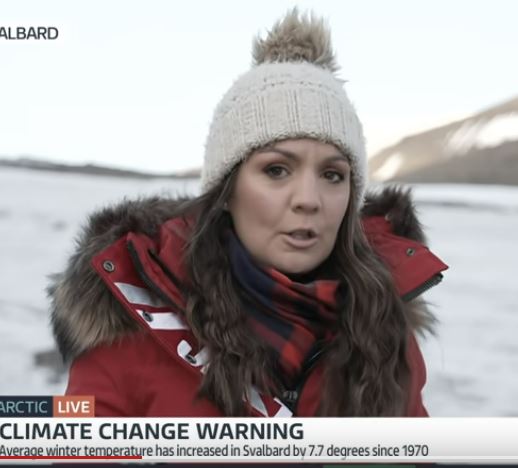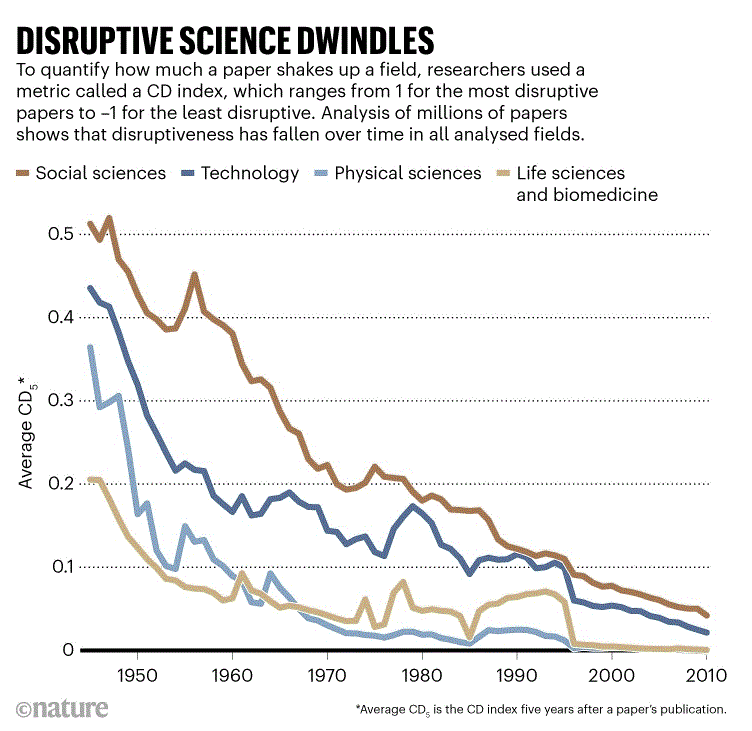|
|
||||
By Jo NovaWhat would it look like if a doomsday cult had a billion dollars to spend on a skiing holiday?Maybe like the World Economic Forum: Here are people who think they are the select few, saviours of the world. They’re touched, they say by something (like an extra terrestrial maybe?) It’s an apocalypse, you know, like 600,000 Hiroshima class atomic bombs says Al Gore. They’re boiling the oceans. They might be powerful and rich, but the good news is they are utterly absurd. The modern prophets are here to rescue youEspecially US climate envoy John Kerry: “When you start to think about it, it’s pretty extraordinary that we – a select group of human beings, because of whatever touched us at some point in our lives – are able to sit in a room and come together and actually talk about saving the planet,” Kerry told a WEF panel on Tuesday. “It’s so… almost extra-terrestrial to think about, saving the planet. If you say that to most people most people, they think you’re just a crazy tree hugging and lefty liberal, you know, do-gooder, whatever,” he added. From somewhere above Earth in an omnipotent kind of place, here’s someone who thinks he’s God: As Jordan Peterson says: “Who are you gong to sacrifice to save the planet @JohnKerry — and do you think and how will you ensure that they have any say in the matter?“ Thanks to Umang Sharma at Firstpost Meanwhile Al Gore tells us 600,000 atomic bombs are boiling the oceansIt’s the hellfire and brimstone formula, with hyperbole, sensationalism and big-scary-numbers. Chris Donaldson, BizPac Review, claimed the overstuffed prophet of climate doom delivered a deranged rant, and all Donaldson had to do was quote him: “We’re still putting 162 million tons into it every single day, and the accumulated amount is now trapping as much extra heat as would be released by 600,000 Hiroshima class atomic bombs exploding every single day on the Earth,” Gore said. “That’s what’s boiling the oceans, creating these atmospheric rivers and the rain bombs and sucking the moisture out of the land and creating the droughts and melting the ice and raising the sea level and causing these waves of climate refugees predicted to reach 1 billion in this century,” he ranted. “Look at the xenophobia and political authoritarian trends that have come from just a few million refugees. What about a billion? We would lose our capacity for self governance on this world. Have you seen a bomb going off? Me neither.
Give us your moneyIt all comes back to one thing. Or that other thing at €2,300 a night: Prostitutes gather in Davos for annual meeting of global elite – where demand for sexual services rockets during economic summitYou’d think planetary heroes would be more popular with the girls? My favourite description of the WEF is that they are globalization’s “Mafiocracy” of bankers, industrialists, oligarchs, technocrats and politicians. h/t another ian, John Connor II, Doc, David. By Jo Nova
Outlook? Terrifying: TV weather presenters on the hell and horror of the climate crisisGuardian What is it like to have a front row seat for the worst show in the world? Four meteorologists describe how they are explaining the reality to viewers – and coping with it themselves Long gone is the British stiff upper lip as the Luftwaffe bomb London, now beach weather brings tears: Switching channels, the ITV meteorologist Laura Tobin, who does the weather bulletins on Good Morning Britain, was also on duty that day. Like Rich, she had been watching the models with a mixture of incredulity and dread. “I remember when I did my first bulletin on that Tuesday morning I forecast that we would break 40C. Then when I sat down and chatted to my producer, I had tears in my eyes. Something I had thought would be a reality in the future was a reality that day. We shouldn’t be reaching these temperatures – it would be impossible to without climate change.” TV journalists are, in theory, supposed to ask hard questions — like maybe whether hot records mean anything at all when they are recorded with equipment that sits next to hot tarmac, has an error margin of 1 to 2C, and lasted less than three minutes. Three of the five hottest spots that day were also at airports while a station in the green fields of Harpenden only reach 37.8°C. See Cliscep for all those details. If you don’t like forty degree days, don’t build next to a tarmac. It was hardly the “New Normal” it was the hyped hot two-minutes What if the planet doesn’t need saving? Laura Tobin is selling a book. As the DailySceptic points out: The record [at RAF Coningsby] was set at 3.12pm following a sudden jump in temperature of 0.6°C in the previous two minutes. Sixty seconds later, the temperature fell to 39.7°C. The Met Office has refused to answer our questions on the matter. So the record probably didn’t even exist, and even if it did, it’s hardly a PTSD event to be psychoanalysed months later. Get ready for therapy: I’m talking to four weather presenters and meteorologists about what it is like to have a front row seat at the worst show in the world: the climate crisis. Weather is not the same as climate, except when it is:Of course, weather is not the same thing as the climate: one happens over days, the other decades. But, as Clare Nasir puts it: “Climate impacts weather.” Obviously the weather-isn’t-climate line is getting to them. Let’s use it. And they know their whole faith comes back to climate modelsIf you start with useless models — CO2 can pretend to fill in for all the other variables you forgot: She explains how scientists have learned to detect a climate-change footprint in a particular weather event (extreme heat, rain, storms, etc) “by running the computer models with the scenario that has just happened but with lower amounts of carbon dioxide in the atmosphere to see if you could actually squeeze out that temperature, or that amount of rainfall. They then go back and put in a lot of different scenarios so they can calculate the likelihood of this event happening because of climate change. They can put a number on it – say, for example, it’s 100 times more likely this event has occurred because of climate change.” Climate models are just the neolithic binary entrails that modern shamen read. The modelers don’t even include electromagnetism, space weather, cosmic rays and changes in UV spectrum. If any of those changed the climate in the last fifty years, the models will blame CO2 instead. That’s what they are designed to do…  Laura Tobin in Svalbard GMB Tobin’s in tears again: “there’ll be no more reindeer”This is what 40 years of feminism has brought us, the right for women to cry on TV? In 2021 Tobin went to Svalbard, the Norwegian archipelago in the Arctic, to report for Good Morning Britain. She saw how the glaciers had receded, how the fjords were no longer freezing over, how this was affecting the wildlife: polar bears were dying, human economies were dying. And again there were tears, this time live on camera. “I didn’t mean to. I didn’t want it to be about me crying; I wanted it to be about the science. But I just saw the reality of it and it moved me. I realised that we – everybody – is responsible for that change. Seeing the reality compared to seeing and knowing the science was different. That was the moment for me when I was like: I want my daughter to come back and see this. If we don’t change there may be no reindeer, polar bears or glaciers when she’s my age. That was reality.” It doesn’t get much more embarrassing for women in science than disappearing reindeer, except possibly for women who use namecalling, guilt, and ad hom attacks: Back then, [Clair] Nasir says, the media thought it needed to provide a “balanced” point of view, and “even though the science at that point was pretty much spot on, they were allowing these climate deniers – whether they were in the pockets of the fossil fuel companies or whatever – to come on to voice their opinions without any factual backing whatsoever. I’m going to say this in the harshest possible terms: everybody had blood on their hands.” It’s not science, it’s just a Psy-Op. The money is a billion times bigger on their side. Someone tell Clair about the $130 trillion dollar banker cartel called GFANZ. Surprise: Government fixes price, and gas supply gets paralyzed
For some reason ordering people to have goodwill “or else”, just means everyone hires more lawyers, no one knows what they can “reasonably” charge, investors run for the hills, and production shrinks. It’s almost as if the free market turned into a Soviet economy… if the government decides the price, it’s almost like the government owns the industry, yeah? h/t to Eric Worrall, via RicDre Australian energy users call gas industry ‘a bunch of bullies’ amid claims of supply shortagesPeter Hannam, The Guardian Samantha McCulloch, the chief executive of the Australian Petroleum Production & Exploration Association (Appea), said…. “The lack of clarity on how the price cap order is to be applied alongside the threat of permanent gas price regulation has virtually paralysed the market.” Companies could face a $50m penalty for breaching rules that are still being defined, she said… So no one wants new customers now. Retailers blame price cap for fears over gas supplyRachel Baxendale, The Australian Multiple energy retailers across the eastern seaboard have stopped taking new gas customers and others are ramping up their prices as they struggle to secure ongoing supply from producers following the Albanese government’s imposition of a wholesale price cap. And energy retailers can’t get gas: Australia’s second-largest energy retailer, AGL, has been unable to secure contract supply of gas for 2023, prompting it to cease taking new commercial and industrial customers… Every energy retailer The Australian contacted said they had been unable to secure gas from producers under the $12/GJ price cap. “No counterparty is currently willing to sell at the proposed $12 rate, and we’re not even sure how it’ll work in practice when the reforms come into place, since there’s very little that seems to be actual concrete around it right now,” Mr Yemm said. Strangely price caps do not drill holes and find more gas:“The superficial appeal of capping prices is quickly eroded as investment wanes and production falls, leading to sustained higher prices over the longer term and inevitable supply constraints,” Mr Heffernan said. “If the desire is to increase supply, especially during periods of high need, and reduce prices, then price caps do the opposite.” “If suppliers don’t know what (the reasonable pricing) provision is, it would be difficult to write a multi-year contract,” Ms Reeve said. “If they assume a future higher price, they may get caught out if that price is later determined to be ‘unreasonable’. If they assume $12/GJ continues, they may miss out on profits. Worse-case bills have already started The most competitive household gas prices on the east coast are already as high as Jim Chalmers’ worst-case scenario, as retailers hike prices by a further 20 per cent from next month. Keep reading → Someone who knows what life in a poor country and what having children means explains why Woke Culture has gone too far to young people at the Oxford Union. The only thing Wokeness has to offer in exchange is to brainwash bright minds like you that you are victims and to complain, to protest, to throw soup on paintings.
Konstantine Kisin is a British satirist, author, and commentator who was born and raised in Moscow.
The UK set to ban sales of new petrol and diesel cars by 2030, but awkwardly, the average cost of charging an electric car has jumped by 58 per cent since last May, so sales are falling, not rising. The UK can’t afford to make them either, with BMW sending their UK electric mini factory to China. President Xi will be happy. The West thought the Glasgow commitments was a climate plan, but really it was trade deal. Electric car makers put the brakes on UK production because many drivers think the vehicles are too expensiveCalum Muirhead, Daily Mail It is now expected that the UK will produce 280,000 fully electric cars and vans in 2025, down from previous estimates of 360,000. The forecast means only a quarter of car output will be electric within the next two years, lower than prior forecasts of more than a third. The command-economy of gas meets the command-economy of cars and pretty soon we’ll be riding horses: In its latest report, the Advanced Propulsion Centre, which provides taxpayer funding to makers of zero-emissions vehicles, said the ‘uncertain economy’ was expected to push drivers towards cheaper car models for a longer period. So much for that theory. Green fantasies are a luxury item. It takes a lot of money to be this stupid. If only they had built nuclear plants or allowed cheap gas fracking… If only they could do maths.  The Larcum Kendall K1 Watch — The most important watch you probably never heard of. Oldbrew at Tallbloke’s Talkshop found a study showing that icebergs around Antarctica apparently haven’t changed much in the last few centuries despite an extra 2,000 Gt of CO2, and all that global warming. Remember climate change is going to hit Antarctica twice as hard as anywhere else. As Oldbrew said: Probably not the result that was expected from this study. Given the world warmed in the last three hundred years, it seems surprising that icebergs don’t seem to have changed. But if they had declined, this study would be a star of the news tonight. Instead I doubt many stations will report that if Captain James Cook returned today he might not see much difference. Fascinatingly, Cook had a watch worth £450 so he could estimate longitude. To give some idea of just how fantastically valuable that watch was, ponder that the whole ship he commanded cost £1,800. The Larcum Kendall K1 watch was so prized Cook made sure “the commander, first lieutenant and astronomer were all present when it was used”. It was modeled on the H4 clock, which only lost 5 seconds on a 81 day journey. Consider — today, we are all richer than kings. Antarctic icebergs still exist today where 1700-era sailors spotted and tracked themby Todd Hollingshead, Brigham Young University
[Phys.Org] A new study comparing observations of large Antarctic icebergs from the 1700s with modern satellite datasets shows the massive icebergs are found in the same areas where they were pinpointed three centuries ago. The study shows that despite their rudimentary tools, the old explorers truly knew their craft, and it confirms that the icebergs have behaved consistently for more than 300 years. Using primarily the journal records of Captain James Cook’s 1772–1775 Antarctic circumnavigation on the HMS Resolution (where he noted the positions of hundreds of icebergs), a trio of researchers from Brigham Young University, NASA’s Jet Propulsion Laboratory and the University of Washington’s School of Oceanography made comparisons with the two largest modern datasets available today: the BYU/National Ice Center and Alfred Wegener Institute datasets. They found that Cook’s description of the iceberg plume east of Antarctica’s Amery Ice Shelf, along with iceberg distributions in the Weddell, Ross and Amundsen Seas, agree with modern data. They also found additional iceberg tracking by Edmond Halley in 1700, Lozier Bouvet in 1739 and Edward Riou in 1789 are consistent with modern observations. “Where they saw icebergs, we see icebergs now; where they didn’t seem them, we don’t see them,” said study coauthor David G. Long, BYU professor of electrical and computer engineering. “The old data from these explorers may not been very good, but it’s all that we’ve got from that time—and it’s good enough.” Keep reading → Across all branches of science, new ideas that reset the paradigms have quietly vanishedThe spark never started in the star-ideas that should have shone, and we find ourselves suddenly under a dark sky, looking up at a galaxy of burnt gravy, thinking something is missing. As dominant paradigms became entrenched in every field of science, the great new replacement ideas starved. Nature might as well have labeled this “A graph of Original Thought at University”It’s like some sole giant entity infected every area of science and crushed original thinkers. Disruptive science sounds like something impossible to measure, but the researchers found way to test for the arrival of new papers that replace past paradigms. Genius discoveries may still have happened, but no one picked them up. The authors reasoned that if a study was highly disruptive, subsequent research would be less likely to cite the study’s references, and instead would cite the study itself. Using the citation data from 45 million manuscripts and 3.9 million patents, the researchers calculated a measure of disruptiveness, called the CD index, in which values ranged from –1 for the least disruptive work to 1 for the most disruptive. And it’s a wipe-out: The CD Index fell by 90% since World War II. A similar fall occurred in patents, with an 80% decline from 1980 to 2010. The language in the papers also The verbs scientists used changed too — with older papers saying they would produce or determine things, while newer papers just improve and enhance… It’s happening in every field of science at the same time — almost like a systematic failureDaniel Lawler and Juliette Collen explain that this is not a case of scientists discovering everything there is to know in one area: One theory for the decline is that all the “low-hanging fruit” of science has already been plucked. If that were the case, disruptiveness in various scientific fields would have fallen at different speeds, Park said. But instead “the declines are pretty consistent in their speeds and timing across all major fields,” Park said, indicating that the low-hanging fruit theory is not likely to be the culprit. It’s as if there is something wrong with the incentives across the board? Looks like the rise of Government funded GroupThink?Since World War II governments took over the role of funding science from philanthropists. Once upon a time one guy funded another one and great things happened. Now Government funded committees that are spending other people’s money, reject the risky genius and fund the middle-of-the-road instead. New ideas don’t stand a chance against monopoly science. …when you increasingly have big government money involved in research, following World War II, it becomes more and more difficult to buck the popular trends. Tie that to the growing blacklist culture that now destroys the career of any scientist who dares to say something even slightly different, and no one should be surprised originality is declining in scientific research. The culture will no longer tolerate it. You will tow the line, or you will be gone. Scientists are thus towing the line. Naturally, Nature, a product made for government funded science, doesn’t know why socialist science is failing:‘Disruptive’ science has declined — and no one knows whyNature The number of science and technology research papers published has skyrocketed over the past few decades — but the ‘disruptiveness’ of those papers has dropped, according to an analysis of how radically papers depart from the previous literature1. Data from millions of manuscripts show that, compared with mid-twentieth-century research, that done in the 2000s was much more likely to push science forward incrementally than to veer off in a new direction and render previous work obsolete. Analysis of patents from 1976 to 2010 showed the same trend. The average CD index declined by more than 90% between 1945 and 2010 for research manuscripts (see ‘Disruptive science dwindles’), and by more than 78% from 1980 to 2010 for patents. Disruptiveness declined in all of the analysed research fields and patent types, even when factoring in potential differences in factors such as citation practices. Why the slide?It is important to understand the reasons for the drastic changes, Walsh says. The trend might stem in part from changes in the scientific enterprise. For example, there are now many more researchers than in the 1940s, which has created a more competitive environment and raised the stakes to publish research and seek patents. That, in turn, has changed the incentives for how researchers go about their work. Large research teams, for example, have become more common, and Wang and his colleagues have found3 that big teams are more likely to produce incremental than disruptive science. So we use group-science, funded by committees, and approved by anonymous pals and get the Science Superhighway to nowhere. The more the government funds science, the worse it will get. UPDATE _______________________________My response to a commenter who effectively said the geniuses are being diluted by the midwits: It’s far worse than just dilution. Academia is actively driving out the mavericks, the geniuses, and awarding prizes and promotions to the midwits. The number-guys who dream in fractals and sine curves aren’t the best networkers, or possibly the most appreciated lecturers either. The aspergic personalities are hampered with a compulsion to speak the truth, and when its politically correct it is the perfect excuse for the networking-talker under them to report them for offending some minority group and get them sacked. The end result is a promotion for the politically correct liar. There is no place any more for the true genius at university. Those who rock the boat and criticize or expose past paradigms are trouble-makers. Peer review and committee approval makes it easy to neutralize their careers. Anon reviewers can nix a paper that makes the reviewers expertise look stupid, or threatens their own gravy train. Brilliant people now either gravitate to politically neutral irrelevant topics or they leave university, work for Wall St, or they live off donations. This paper about disruptions has come up with a clever new way to show how crippled science is. By definition, even if the genius discoveries are somehow made, they are not being cited in papers or patents. Doesn’t that show a very real problem? If a tree falls in a forest and nobody hears… REFERENCEKozlov, Max (2023) ‘Disruptive’ science has declined — and no one knows why, Nature 613, 225 (2023) doi: https://doi.org/10.1038/d41586-022-04577-5
This was the glorious green future that just collapsed today. But it’s a win for the rare Typhonium plant, and possibly also for millions of crabs around Indonesia who might have been hypnotized by undersea cables like the ones near the UK are. And who knows what that cable would have done electromagnetically for turtles, dugongs, whales and dolphins? Where are the Greens when giant experimental industrial parks span 5,000km of wilderness? Today the massive Sun Cable project collapsed into voluntary administration four years after promising to build the world’s largest solar power plant in the Northern Territory. Sun Cable was a $35 billion project supposedly to collect those sacred green electrons on a 12,000 hectare “farm” in Australia (120 square kilometers) and send them to Singapore via an 800 km land cable and then a 4,200km undersea cable. It was theoretically going to be nine times bigger than the largest solar plant in the world, and use a cable 6 times longer than the longest one ever built. So this was ambition-on-steroids, and had economies of scale up the kazoo, and possibly as much sunlight as any place on Earth, but it was still obscenely uneconomic and expensive. Allegedly, environmentally, it would have achieved the equivalent of taking 2.5 million cars off the road each year, in other words, virtually nothing or even less. For $30b they were reducing the small Australian car fleet by… 12%. The numbers never made sense unless the world valued green electrons so much more than black, brown, blue, red or white ones. That’s $30 billion for just 3.2GW of reliable energy? The same money buys quite a few nuclear plants that will last five times longer and reduce CO2 by vastly more. But it was never about “saving the world”, was it — just about building bigger subsidy farms, and winning a fashion contest at inner city dinner parties. Ultimately the project was supposed to supply 15% of Singapore’s energy needs and also make 800MW for Darwin initially. When finished there would be “20GWp” in toto (or Gigawatt-peak). The plan also included 36-42 gigawatt hours of battery storage too, no doubt providing more jobs for child slaves in the Congo. The legacy media is a defacto PR team for unreliable energy, so they’re selling this collapse as the fault of “Big Egos” — not because the solar project was a stupid idea. Duelling billionaires burn Sun CableChnticleer, Australian Financial Review It is feasible the world’s most ambitious solar energy generation project will go ahead. But don’t expect billionaires Mike Cannon-Brookes and Andrew Forrest to both be involved. Sun Cable said the appointment of administrators followed “the absence of alignment with the objectives of all shareholders”. “Whilst funding proposals were provided, consensus on the future direction and funding structure of the company could not be achieved,” it said. Sun Cable must have been under considerable financial pressure leading into the end of 2022 judging from documents lodged with the corporate regulator about a series B preference share issue. Assuming this preference share issue is not related to the capital raising announced last March, Sun Cable was forced to raise $28 million in late December through the issue of 11.9 million series B preference shares at $2.34 each. It is difficult to understand why a company such as Sun Cable, which is in the regulatory approval stage of its evolution, is apparently burning through so much cash. In essence, Sun Cable’s strategic value is really at the mercy of the choices made by the Singaporeans, including how much they are willing to pay. Whoever buys Sun Cable will have to have deep pockets, because something of this scale and ambition will inevitably lose money well into the 2030s. h/t Scott A, David B, Graeme#4, David Maddison By The Babylon Bee. Experts Say They Don’t Know What Thing Is Causing Everyone To Suddenly Collapse, But It’s Definitely Not That One Thing.
According to sources, experts have been working tirelessly around the clock to try and get to the bottom of why so many seemingly perfectly healthy, athletic people are falling over suddenly.
If only it was all a jokeThe studies
|
||||
|
Copyright © 2024 JoNova - All Rights Reserved |
||||





















Recent Comments